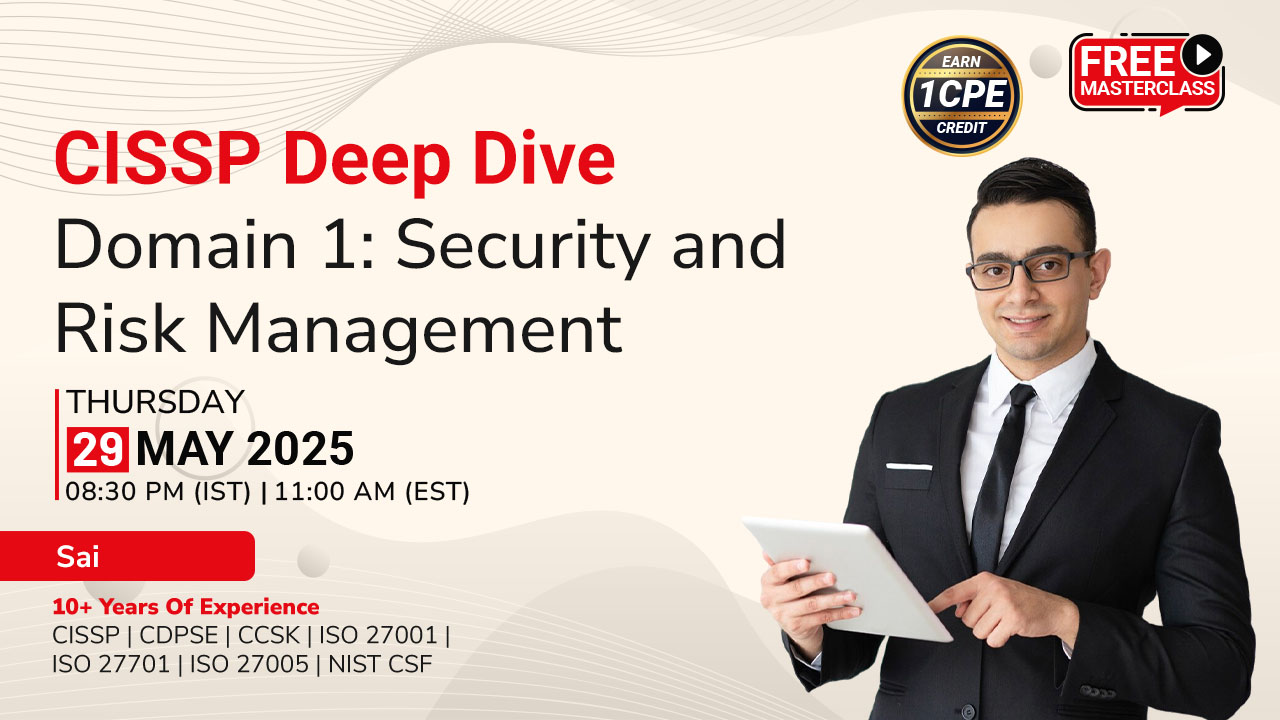Top CRISC Interview Questions 2024
As organizations continue to grapple with complex cybersecurity challenges, the demand for Certified in Risk and Information Systems Control (CRISC) professionals remains high. CRISC certification demonstrates expertise in identifying and managing IT risk, making candidates sought after for roles in risk management, compliance, and cybersecurity. If you’re preparing for a CRISC interview in 2024, here are some technical questions you might encounter. In this article, we have those questions along with their answers:

Question 1: What is the difference between risk, threat, and vulnerability in the context of information security?
Answer: Risk is the potential for damage, loss, or destruction of assets as a result of threats exploiting vulnerabilities. Threats are potential dangers that can exploit vulnerabilities, while vulnerabilities are weaknesses in a system that can be exploited.
Question 2: Explain the concept of risk appetite and risk tolerance.
Answer: Risk appetite is the quantity of risk that an organization is ready to tolerate in order to accomplish its goals. The acceptable quantity of variation in relation to the attainment of objectives is known as risk tolerance.
Question 3: What is the purpose of a risk assessment?
Answer: A risk assessment aims to identify, analyze, and evaluate potential risks to an organization’s assets, including information systems, in order to mitigate those risks effectively.
Question 4: How do you calculate risk exposure?
Answer: Risk exposure is calculated by multiplying the impact of a risk by its likelihood.
Question 5: What are the key components of a risk management framework?
Answer: Key components include governance structures, risk management processes, risk assessment methodologies, and risk monitoring and reporting mechanisms.
Question 6: What are some common methods for identifying risks in an organization?
Answer: Methods include interviews, surveys, workshops, documentation review, and technical assessments such as vulnerability scans and penetration tests.
Question 7: Describe the steps involved in a typical risk management process.
Answer: The steps include risk identification, risk assessment, risk response, risk monitoring, and risk communication.
Question 8: What is the purpose of a risk register?
Answer: A risk register is a document used to record information about identified risks, including their likelihood, impact, and planned responses.
Question 9: What is the difference between qualitative and quantitative risk assessment?
Answer: Qualitative risk assessment involves assessing risks based on subjective criteria, while quantitative risk assessment involves assessing risks using measurable data and calculations.
Question 10: Explain the concept of risk treatment options.
Answer: Risk treatment options include avoiding, mitigating, transferring, or accepting risks based on the organization’s risk appetite and tolerance.
Question 11: How do you assess the effectiveness of risk controls?
Answer: Effectiveness can be assessed through control testing, monitoring key risk indicators (KRIs), and evaluating control design and operation.
Question 12: What is the purpose of a security policy framework?
Answer: A security policy framework provides guidance and standards for developing, implementing, and maintaining effective security policies within an organization.
Question 13: What is the role of a Business Impact Analysis (BIA) in risk management?
Answer: A BIA identifies and prioritizes critical business functions and their dependencies to assess the potential impact of disruptions and determine recovery priorities.
Question 14: How do you prioritize risks for treatment?
Answer: Risks can be prioritized based on their likelihood, impact, strategic importance, and the organization’s risk appetite.
Question 15: Explain the concept of residual risk.
Answer: Residual risk is the level of risk that remains after risk treatment measures have been implemented.
Question 16: What role does compliance play in risk management?
Answer: Compliance ensures that organizations adhere to relevant regulations, laws, and industry standards to mitigate legal and regulatory risks.
Question 17: How do you integrate risk management into the software development lifecycle (SDLC)?
Answer: Risk management can be integrated by conducting risk assessments at each phase of the SDLC, implementing security controls, and incorporating security requirements into development processes.
Question 18: Describe the role of continuous monitoring in risk management.
Answer: Continuous monitoring involves ongoing assessment of risks, controls, and changes in the organization’s environment to ensure that risk management remains effective.
Question 19: What is the role of internal audit in risk management?
Answer: Internal audit provides independent assurance and consulting services to evaluate the effectiveness of risk management processes and controls.
Question 20: Explain the concept of risk aggregation.
Answer: Risk aggregation involves combining individual risks to assess an organization’s overall risk exposure.
Question 21: How do you measure the effectiveness of a risk management program?
Answer: Effectiveness can be measured through key performance indicators (KPIs), such as reduction in risk exposure, incidents, and compliance violations.
Question 22: What is the difference between a risk owner and a risk manager?
Answer: A risk owner is responsible for managing a specific risk, while a risk manager oversees the overall risk management process and framework.
Question 23: How do you communicate risk to senior management?
Answer: Risk communication involves presenting risk information in a clear, concise manner, focusing on potential impacts, likelihood, and recommended actions.
Question 24: What are some emerging trends or challenges in risk management?
Answer: Emerging trends include the increasing complexity of cyber threats, regulatory changes, and the adoption of new technologies such as artificial intelligence and blockchain.
Question 25: How do you stay updated on the latest developments in risk management and cybersecurity?
Answer: Staying updated involves participating in professional development activities, attending conferences, and regularly reviewing industry publications and best practices.
Final Words:
Preparation is key to success in a CRISC interview. By familiarizing yourself with these technical questions and their answers, you can demonstrate your expertise in risk management and information security, increasing your chances of landing your desired role.
InfosecTrain offers comprehensive CRISC certification training, covering key concepts, tools, and techniques essential for success. With expert instructors and flexible learning options, InfosecTrain ensures you’re fully prepared for CRISC certification and beyond.
TRAINING CALENDAR of Upcoming Batches For CRISC
| Start Date | End Date | Start - End Time | Batch Type | Training Mode | Batch Status | |
|---|---|---|---|---|---|---|
| 26-Jul-2025 | 17-Aug-2025 | 19:00 - 23:00 IST | Weekend | Online | [ Open ] |







 1800-843-7890 (India)
1800-843-7890 (India)